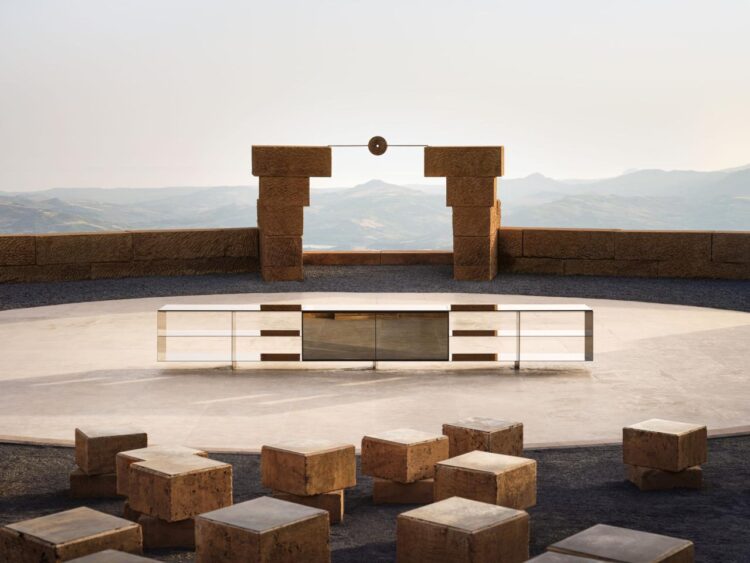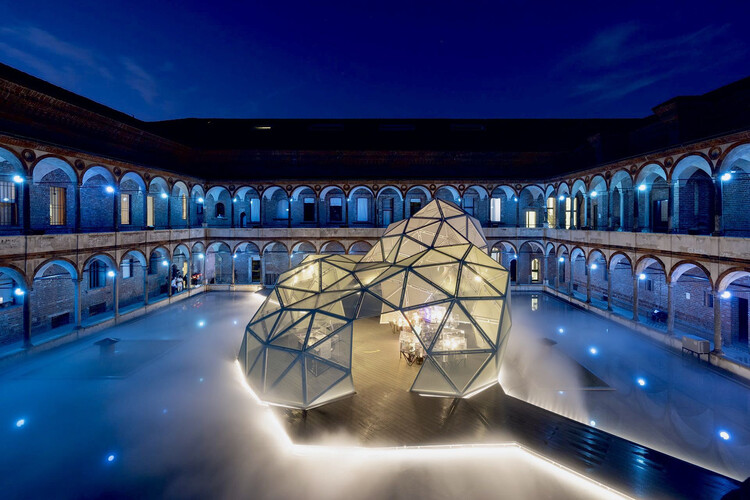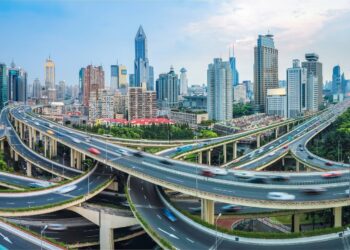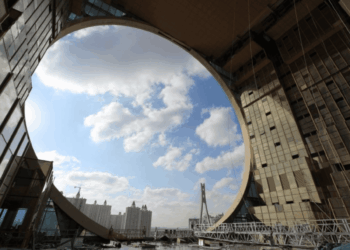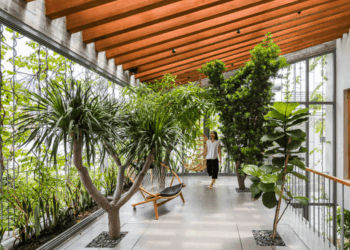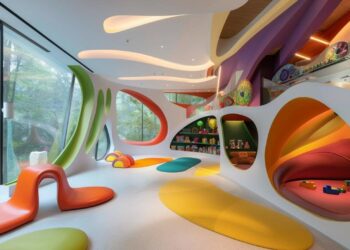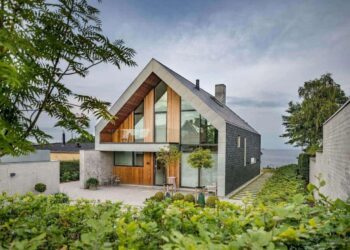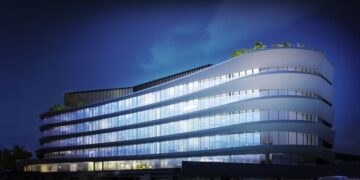Milan Design Week has long been celebrated as one of the world’s most prestigious design festivals. In its latest edition, global architectural innovations took center stage as designers, technologists, and artists converged in the Italian metropolis. The event not only highlights modern creativity but also redefines how our cities and spaces evolve. Over the course of an entire week, groundbreaking ideas emerged in every corner of the city, merging tradition with futuristic visions, sustainable practices with technology-driven solutions, and art with architecture. This comprehensive article delves deeply into the event’s many dimensions, its influential exhibitions, and how these innovations shape the future of urban design and global architectural practices.
Milan Design Week stands as a testament to the transformative power of creativity and innovation. Every year, this iconic festival attracts hundreds of thousands of visitors, industry professionals, and enthusiasts from around the globe. The week-long celebration goes far beyond merely showcasing aesthetics; it functions as an incubator for new ideas that redefine design, functionality, and sustainability in architecture.
The event is much more than a static display of furniture and design objects. Instead, it is a vibrant, interactive platform where ideas are shared, debated, and transformed into tangible projects. From immersive installations that blend reality with digital fabrication to interactive pavilions that encourage audience participation, Milan Design Week is at the forefront of a revolution in how we understand space and design.
This article provides an expansive look at the latest edition of Milan Design Week, exploring its global significance, the novel architectural innovations on display, and the trends that are poised to shape the future of digital and physical design. Whether you are a design professional, a student of architecture, or simply a curious observer, this exploration offers insights into the creative heartbeat of one of the world’s most dynamic design hubs.
A. Overview of Milan Design Week
A.1 Historical Background and Evolution
Milan Design Week has its roots in a rich Italian tradition of excellence in art and design. Over several decades, the city of Milan evolved into an international epicenter for innovation, fueled by a blend of cultural heritage and modern sensibilities. The event began as a modest exhibition in the early 1960s and has grown into an influential global phenomenon that now encompasses numerous events, exhibitions, and collaborative projects across Milan. Today, the festival is synonymous with forward-thinking design and groundbreaking architectural experiments.
A.2 Thematic Focus of the Latest Edition
This year’s event prioritized several key themes:
A. Sustainability and Eco-friendly Design:
Designers embraced practices that reduce environmental impact, from using recycled materials to pioneering energy-efficient construction methods.
B. Digital Integration:
Virtual reality, augmented reality, and smart materials integrated seamlessly with traditional design elements to create interactive experiences.
C. Cultural Fusion:
The festival celebrated the blending of diverse cultural influences, reflecting a global narrative that is inclusive, dynamic, and experimental.
Each theme was woven into the fabric of the event, illustrating how innovative ideas can enrich and transform the world of architecture and design.
B. Highlights of the Event
B.1 Signature Installations and Exhibitions
The festival featured a plethora of standout installations that captivated the imagination of visitors. Here are some notable examples:
1. Interactive Immersive Spaces:
At several venues across the city, large-scale immersive installations invited audiences to step into alternate worlds where art met technology. These installations utilized projection mapping, interactive sensors, and responsive lighting to create environments that changed based on visitor interactions.
2. Sustainable Pavilions:
Several pavilions emphasized eco-friendly designs crafted from recycled, biodegradable, or locally sourced materials. These pavilions not only showcased innovative design but also educated visitors on sustainable practices. Their clever use of renewable energy sources, such as solar panels and wind turbines, demonstrated practical approaches to green architecture.
3. The Digital Fabrication Hub:
A dedicated space for digital fabrication allowed designers to exhibit prototypes and final works created using technologies such as 3D printing and laser cutting. The hub provided live demonstrations and workshops, inspiring a new generation of designers to embrace digital fabrication techniques.
B.2 International Collaborations
One of the festival’s most compelling aspects was its ability to unite global talent. Designers and architects from various parts of the world collaborated on projects that combined their unique perspectives and expertise. These international collaborations resulted in installations that were not only visually stunning but also conceptually rich, representing a blend of cultural narratives and technological prowess.
B.3 Interactive Public Engagement
Milan Design Week is renowned for engaging the public in ways that transform passive audiences into active participants. Several events featured interactive installations where visitors could contribute to the evolving works of art. For instance, some digital walls allowed people to create their own art in real-time, while others invited feedback that directly influenced the progression of an ongoing installation. This participatory approach highlights the belief that design is a collective dialogue, rather than a monologue delivered by experts.
C. In-Depth Look at Global Architectural Innovations
C.1 Sustainable Architecture and Green Building Practices
Sustainability was one of the cornerstones of this year’s Milan Design Week. The event showcased a variety of new approaches to green building that prioritize environmental stewardship while enhancing functionality and aesthetics.
A. Eco-friendly Materials and Construction Techniques:
Designers championed the use of eco-friendly materials, ranging from reclaimed wood to innovative bio-composites. These materials not only reduce the carbon footprint but also open up new possibilities in terms of design and texture.
B. Energy-Efficient Designs:
Energy efficiency remains paramount in contemporary architecture. Numerous installations featured solar-powered features, natural cooling systems, and innovative insulation techniques that reduce energy consumption without sacrificing design integrity.
C. Circular Economy Models:
The concept of a circular economy—where materials are reused and recycled indefinitely—was vividly displayed. Architects presented modular structures that can easily be disassembled and repurposed, offering a sustainable alternative to traditional construction methods.
C.2 The Role of Digital Technologies in Architecture
The integration of digital technologies with architectural design has transformed traditional building practices. At Milan Design Week, several installations showcased how digital tools are reshaping the industry.
A. Virtual and Augmented Reality:
Virtual reality (VR) and augmented reality (AR) technologies enabled architects to create immersive simulations of their designs. Visitors could explore virtual models of future urban landscapes, gaining a tangible sense of space before actual construction begins.
B. Parametric Design:
Parametric design tools use algorithms to generate complex and optimized architectural forms. This approach not only streamlines the design process but also allows for the creation of structures that adapt dynamically to environmental and functional needs.
C. Smart Building Technologies:
The advent of smart sensors and Internet of Things (IoT) devices in architecture has revolutionized how buildings interact with their occupants. Intelligent buildings can adjust lighting, temperature, and even spatial layouts in real time based on usage patterns and environmental factors.
C.3 Blending Tradition with Innovation
Milan Design Week was also a celebration of heritage. Many exhibitors paid homage to traditional Italian craftsmanship by integrating age-old techniques with modern technology. This synthesis of the old and the new represents a growing trend in architecture—one that values history while embracing future possibilities.
A. Restoration with a Modern Twist:
Several projects involved the adaptive reuse of historical buildings, transforming them into multifunctional spaces that meet contemporary needs. These initiatives demonstrate that maintaining cultural heritage can coexist with innovation when done thoughtfully.
B. Artisanal Craftsmanship:
Artisans from across Italy showcased their skills through live demonstrations. By blending artisanal techniques with contemporary design concepts, these artisans are setting new trends that appeal to a modern audience while preserving cultural identity.
C. Hybrid Materials:
Innovative designs also explored hybrid materials that combine traditional substances, like stone and wood, with modern composites. This fusion allows for creative flexibility, ensuring that the enduring qualities of natural materials are retained while achieving enhanced performance.
D. The Impact of Milan Design Week on Global Architecture
D.1 Influencing Urban Development Trends
The ideas and innovations seen at Milan Design Week have far-reaching effects on urban development worldwide. Cities across the globe are beginning to adopt similar approaches to integrate sustainability, technology, and cultural heritage into their planning and construction practices.
A. Revitalization of Urban Spaces:
Many cities are now focusing on transforming underutilized or derelict areas into vibrant communal spaces. Initiatives such as urban gardens, pop-up markets, and interactive art installations echo the experimental spirit of Milan Design Week.
B. Smart City Concepts:
Urban planners are increasingly incorporating smart city technologies to enhance quality of life. From intelligent transportation systems to energy-efficient public infrastructures, the technologies showcased at Milan Design Week offer a blueprint for sustainable urban transformation.
C. Cultural and Social Impact:
Beyond physical transformation, the festival has spurred a cultural renaissance in how cities perceive their public spaces. The interactive and inclusive nature of the installations encourages a sense of community, paving the way for cities to become more resilient and socially cohesive.
D.2 Inspiring the Next Generation of Designers
One of the most significant outcomes of Milan Design Week is its inspirational influence on young designers and students. The festival serves as an open forum where future architects can explore the intersection of art, technology, and sustainability.
A. Educational Workshops and Talks:
In addition to exhibitions, the festival hosted numerous conferences, panel discussions, and workshops that provided insights into contemporary challenges and opportunities in design. Renowned experts shared their experiences and technical knowledge, equipping aspiring designers with practical skills and new perspectives.
B. Mentorship and Networking Opportunities:
For emerging talents, Milan Design Week is a vital networking platform. Young professionals have the chance to interact with seasoned designers, fostering mentorship relationships that are essential for career development in an ever-evolving industry.
C. Inspiration Through Experimentation:
The daring concepts and experimental approaches exhibited at the festival challenge conventional wisdom. By witnessing innovative projects up close, the next generation gains the confidence to explore uncharted territories in design.
E. Embracing a Future of Technological Convergence
E.1 The Rise of Collaborative Innovations
A striking aspect of the recent Milan Design Week was the emphasis on collaborations that span across disciplines and continents. When experts from architecture, digital technology, and fine arts combine forces, the possibilities are vast.
A. Interdisciplinary Projects:
Many installations arose from the synergy between different fields. For example, technology companies partnered with design studios to create interactive exhibits that not only offered aesthetic appeal but also provided functional insights into how future cities might operate.
B. Global Partnerships:
The event underscored the importance of international cooperation. Designers from Asia, Europe, and the Americas showcased projects that cross cultural boundaries, highlighting that architectural innovation is a truly global conversation.
C. Innovation Hubs:
Several pavilions functioned as incubators for new ideas, where collaborative projects were nurtured through a series of brainstorming sessions and live demonstrations. These hubs serve as inspirational centers that drive innovation beyond the event itself.
E.2 Digital Disruption in Architectural Design
Digital tools are no longer just an accessory in the world of architecture; they have become central to the design process. Milan Design Week provided numerous examples of how digital disruption is altering every facet of architecture.
A. Data-Driven Design:
Architects are using data analytics to optimize building performance and user experience. From energy efficiency to spatial dynamics, real-time data allows designers to tailor structures to the environment and human behavior.
B. Augmented Construction Methods:
With the help of augmented reality, construction teams can visualize projects before physical work begins. This enhances precision, reduces errors, and streamlines the building process.
C. Automation and Robotics:
Cutting-edge robotics are now employed not only for construction purposes but also for executing intricate design details that would be challenging by hand. This integration of robotics ensures superior craftsmanship and efficiency.
F. Social and Economic Implications
F.1 Economic Growth Through Innovation
The innovations presented at Milan Design Week have significant economic implications. As cities and businesses embrace these technologies and philosophies, there is potential for spurring economic growth.
A. Boosting Local Economies:
The influx of international visitors and industry professionals translates to increased revenue for local businesses, from hospitality to retail. This economic boost often leads to long-term investments in infrastructure and urban renewal projects.
B. Creating Job Opportunities:
The demand for expertise in digital fabrication, sustainable design, and smart technologies is on the rise. Milan Design Week not only highlights these trends but also contributes to job creation by bridging the gap between emerging talent and established industry leaders.
C. Attracting Investment:
Innovative projects showcased at the festival frequently attract investment from venture capitalists and governmental bodies. These investments are critical to scaling up pilot projects and integrating them into mainstream urban development.
F.2 Social Impact and Community Engagement
Beyond economic growth, the festival’s innovations have a lasting social impact. They challenge traditional notions of community spaces and encourage greater public involvement in design.
A. Interactive Community Spaces:
Many design concepts are aimed at transforming how public spaces are utilized. Examples include community centers that double as innovation labs, or parks that integrate digital installations to foster interaction among visitors.
B. Cultural Representation:
The diversity of projects ensures that different cultural narratives are represented. This inclusivity not only enriches the design discourse but also fosters a sense of pride and belonging among communities.
C. Environmental Awareness:
Projects centered on sustainability serve as real-world examples of how urban living can be environmentally responsible. These initiatives educate the public on the benefits of green architecture, encouraging communities to adopt sustainable practices in their everyday lives.
G. The Role of Technology in Shaping Tomorrow’s Architecture
The synergy between technology and architecture is leading to revolutionary changes in design processes, construction methods, and building management systems.
G.1 Innovative Construction Technologies
New construction technologies are reducing costs, enhancing safety, and pushing the envelope of design possibilities.
A. 3D Printing in Construction:
Architects are increasingly employing 3D printing to create complex structural components with precision. This not only accelerates the construction timeline but also allows for more intricate design details that traditional methods may struggle to achieve.
B. Modular Construction:
Modular construction, which involves prefabricated components assembled on site, is gaining popularity. Its efficiency in terms of both time and resource usage is transforming how buildings are conceptualized and realized.
C. Sustainable Energy Solutions:
Many new projects integrate renewable energy solutions directly into building designs. Photovoltaic panels, wind turbines, and geothermal systems are now seamlessly integrated into structural designs, indicating a clear shift towards sustainability.
G.2 Enhancing User Experience Through Smart Technologies
Smart building features are transforming how individuals interact with their environments.
A. Responsive Interiors:
Interiors are becoming more adaptable, with smart sensors that adjust lighting, temperature, and acoustics based on real-time occupancy and usage patterns. Such responsiveness makes public and private spaces far more user-centric and comfortable.
B. Integrated Data Systems:
The use of data analytics allows for continuous monitoring of building performance, leading to real-time adjustments that optimize comfort and energy consumption. These systems provide valuable insights for both occupants and facility managers.
C. Connectivity and IoT:
The integration of the Internet of Things (IoT) in building management systems fosters a seamless connection between devices, ensuring that structures are more efficient, secure, and adaptive to changing needs.
H. Looking Ahead: What’s Next for Global Architectural Innovation
Milan Design Week is not just an event—it is a harbinger of global shifts in how we approach design and architecture. The impact of this festival will be felt well beyond the boundaries of Milan, influencing urban planning, construction practices, and technological integration around the world.
H.1 Continued Emphasis on Sustainability
The future of architecture is green. As more designers prioritize sustainability, we can expect an evolution in how buildings are designed, constructed, and maintained. Renewable energy, eco-friendly materials, and circular economy approaches will likely become standard practices.
A. Urban Regeneration Projects:
Future urban projects may increasingly rely on principles established during Milan Design Week. The focus on revitalizing old structures while embedding new, sustainable technologies represents a powerful model for cities worldwide.
B. Climate-Adaptive Architecture:
As climate change continues to pose challenges, architects will be motivated to develop designs that are resilient, adaptable, and forward-thinking. Climate-adaptive buildings that can respond to environmental stressors are on the horizon.
C. Community-Driven Green Initiatives:
The public’s engagement with interactive installations centered on sustainability signals a growing desire for environmentally responsible urban living. Future projects may incorporate feedback loops that allow communities to influence sustainable design choices actively.
H.2 Evolution of Design Practice and Education
The festival has set a new benchmark for how design is taught and practiced.
A. Integration of Digital Tools in Curricula:
As digital fabrication and data-driven design become ubiquitous, academic institutions around the world are revamping their curricula to include these technologies. This integration ensures that tomorrow’s designers are well-equipped to handle evolving industry demands.
B. Cross-Disciplinary Learning:
The fusion of architecture, technology, and art exhibited at Milan Design Week encourages a more holistic approach to learning. By fostering collaborations between disciplines, educational programs can nurture innovative thinking that transcends traditional boundaries.
C. Lifelong Learning and Professional Development:
With rapid technological advancements, ongoing education is crucial. The festival’s numerous workshops and seminars serve as a model for continuous professional development, ensuring that even established designers remain at the cutting edge of their field.
I. Reflections on the Cultural Significance
Milan Design Week is as much about cultural expression as it is about design innovation. The festival reinvigorates Milan’s longstanding reputation as a city of creativity and excellence. It is a celebration of human ingenuity—a place where cultural narratives meet technological progress and where every visitor is invited to be a part of a larger conversation about our collective future.
I.1 The Art of Storytelling Through Design
Each installation tells a story—a narrative that merges historical context, contemporary challenges, and futuristic aspirations. This art of storytelling is a critical element that resonates with the global audience.
A. Narratives of Renewal:
Many of the showcased projects revolve around themes of transformation and rebirth, reflecting the constant evolution of urban spaces. These narratives offer hope and inspiration, suggesting that the future of design is as limitless as the human imagination.
B. Cultural Exchange:
The exchange of ideas at Milan Design Week transcends borders. Projects that exhibit multicultural influences provide a platform for dialogue and mutual understanding, contributing to a more interconnected and empathetic global community.
C. Innovation as a Catalyst:
The innovative solutions presented at the event serve not only as aesthetic achievements but also as catalysts for societal change. Through design, architects and artists are addressing social challenges, fostering community resilience, and inspiring future advancements.
I.2 A Celebration of Creativity and Resilience
Milan Design Week has consistently been an arena where creativity triumphs over constraints. In a world of rapid change, the resilience of the creative spirit is the driving force behind innovative solutions to modern challenges. The event underscores the enduring human capacity to reimagine and rebuild—a testament to our collective strength.
J. Conclusion
Milan Design Week has once again proven that innovation in design transcends the confines of traditional architecture. It is an ever-evolving celebration where sustainability, technology, cultural heritage, and artistic expression converge to create a blueprint for the future. This transformative event not only inspires architects, designers, and urban planners but also ignites conversations among communities worldwide about what the future of our built environment should be.
As we look ahead to the next era of design, the lessons from Milan Design Week remind us that architecture is not static. It is a vibrant and dynamic discipline, one that grows in concert with society’s needs and aspirations. The fusion of digital technologies, sustainable practices, and a renewed appreciation for cultural heritage holds the promise of a world where our living spaces are smarter, greener, and more harmonious.
The innovations seen in this festival are a microcosm of a broader global shift toward a more thoughtful and inclusive approach to how we build and inhabit our environments. With the momentum generated by such forward-thinking events, the future of urban design and architecture looks as bright as it is bold.

